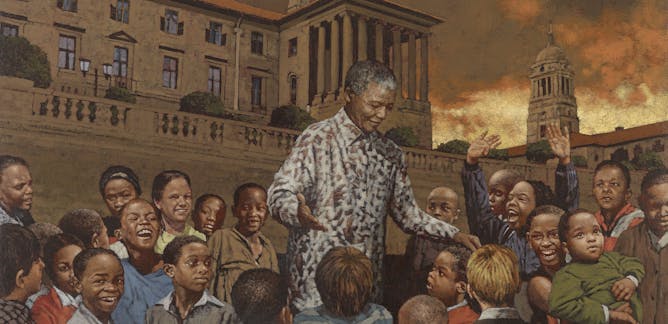|
Namibia is set to hold a national land conference next month to discuss its racially skewed inequality in land ownership. This was inherited from its colonial and apartheid past and persists almost 30 years after independence. Luregn Lenggenhager and Romie Vonkie Nghitevelekwa write that most Namibians are unhappy with the pace and method of land reform that’s been used in the past three decades.
Gerard Sekoto is one of South Africa’s most revered artists. Yet, his work consistently – and significantly so, given his pedigree in the country’s art history – under-performs in relation to the likes of compatriot Irma Stern. Rory Bester argues that in many ways her prominence in the South African art market represents the resilience of apartheid era tastes and preferences, which at the time largely overlooked the quality of black artists.
|

Land reform discussions in Namibia don’t address capital or profits.
shutterstock
Luregn Lenggenhager, University of Basel; Romie Vonkie Nghitevelekwa, University of Namibia
Shortcomings of Namibia's land reforms suggest that voluntary, market-based transactions might not be suitable.
|
Arts + Culture
|

Andrea Witcomb, Deakin University
The desire to eulogise, as often appears to be the case in this exhibition, does not allow space for questions that might allow for a fuller explication of the nature of Mandela’s legacy and its relevance beyond South Africa.
| |

Rory Bester, University of the Witwatersrand
South Africa's government reneged on opportunities to cement artist Gerard Sekoto's legacy.
|
|
|
Health + Medicine
|
-
Shukri Mohamed, African Population and Health Research Center; Tilahun Haregu, University of Melbourne
A study in Kenya found that that there's an association between relatively higher economic status and obesity in a slum setting.
|
|
Business + Economy
|
-
Gert Young, Stellenbosch University
Some South African land owners feel like the current debate portrays them as being opposed to reform rather than cooperative.
|
|
From our international editions
|
-
Charles Hankla, Georgia State University
The US and China once again exchanged fire in their escalating trade war. Tariffs have been the main source of ammunition thus far, but China has other weapons it could begin to deploy.
-
Katherine Whitehouse-Tedd, Nottingham Trent University
Sharks eating seagrass? Sounds fishy, but the reality is that animals don't conform to the strict categories we try to place on their diets.
-
Sandy Brian Hager, City, University of London
A critical review of research into inequality shows the formula for reducing it is surprisingly simple.
-
Jacek Debiec, University of Michigan
Two neural systems record traumatic memories, meaning they can be remembered in both conscious and unconscious ways.
|
|